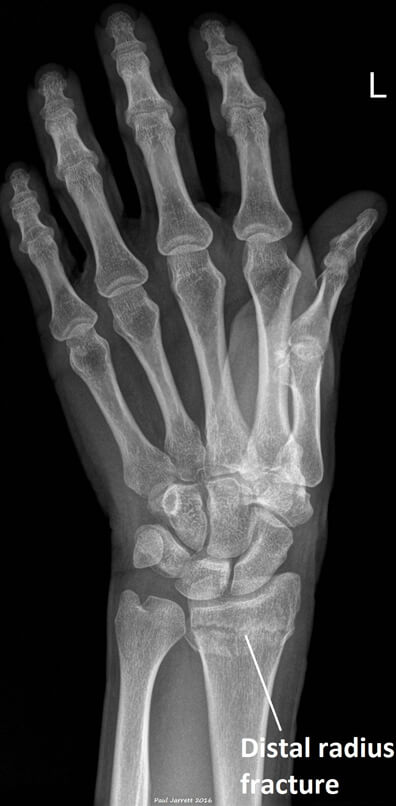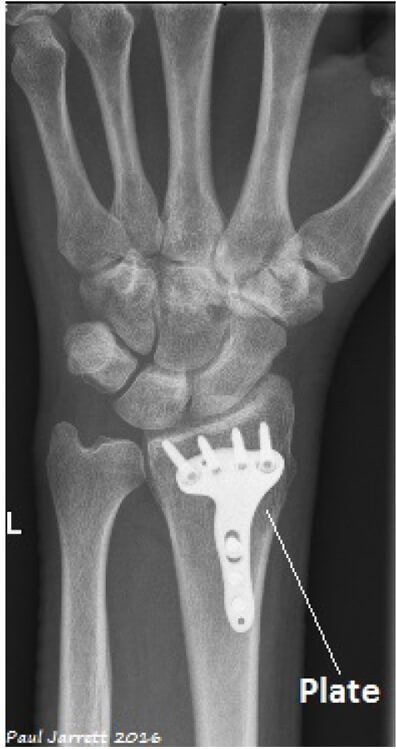
Distal Radial Fractures
Fractures of the end of the radius bone are called Distal Radial Fractures.
Distal Radial Fractures are very common and most often occur when you fall and land upon your outstretched hand (if you attended the Emergency Department you will probably have the word FOOSH written in your notes as it is so common as to have an abbreviation (Fall On OutStretched Hand). The bone may be broken into the wrist joint (intra-articular) or not (extra-articular), and the fracture may be displaced or un-displaced. About half of the time the tip of the end of the ulna bone (ulnar styloid) also breaks. The ulnar fracture usually does not require fixation or treatment.Osteoporosis
If you have suffered a fracture and are middle-aged, and especially if you are a woman and you have osteoporosis, or are at an increased risk of a future fracture, please seek medical help. If you are not already on treatment for osteoporosis, it would be wise to see your General Practitioner to ask for advice for investigation or treatment. Alternatively, if Mr Jarrett has not discussed osteoporosis with you, he can refer you to an appropriate medical practitioner to investigate matters.How are Distal Radial Fractures treated?
If surgery is undertaken, there are risks of infection, tendon, nerve or blood vessel injury, and the bone may not heal in exactly the correction position. Sometimes the metal plate may require removal once the fracture has healed, although it is more common to leave the plate in place. There is a risk of rupture of your tendons on the edge of the plate, which can happen weeks or months or years following surgery, although it is not especially prevalent.
Sometimes tendons can rupture after distal radial fractures even if you have had no surgery. If you notice reduced motion of the thumb or fingers in the weeks after a fracture has occurred, please inform the hand therapists or Mr Jarrett, and they will ensure your tendons are working.
Complex regional pain syndrome is particularly common after distal radial fracture and the risks of this can be reduced with hand therapy. Taking 1 gram of Vitamin C and 1 gram of fish oil every day for six months, especially if you started doing this within 24 hours of your injury, can also be beneficial.
Distal Radial Fractures –
Post-Fracture and Post-Operative Care
It is sensible to keep your wrist elevated for several days after injury to reduce swelling and to keep your fingers, elbow and shoulder moving to reduce stiffness.
If the fracture is treated with a splint or cast without surgery, then once the splint or cast is removed at approximately the 6-week mark your wrist will be quite stiff and still somewhat uncomfortable. Exercises and a period of some months will be required to improve maximally.
It is also not necessarily the case that your wrist will return to normal. Breaking a wrist is a significant injury. It is often the case that many of the soft tissue structures of your wrist will also have sustained subtle damage which may not return to normal.
Usually, if the fracture has been fixed back in place, exercises out of the splint will be commenced in the first few days. You will see the hand therapists and have a custom made splint made.
With distal radial fractures, it is usually worthwhile taking 1 gram of fish oil and 1 gram of vitamin C each day for six months as this has been shown to improve outcomes after distal radial fractures.


